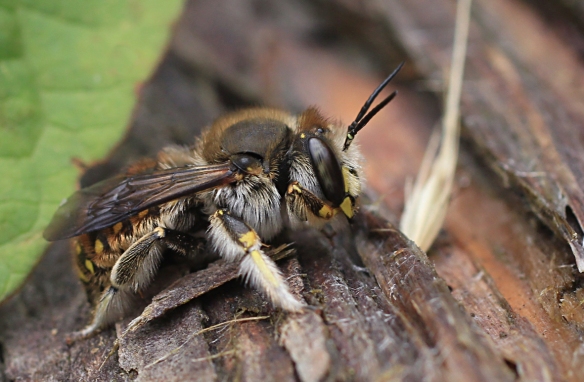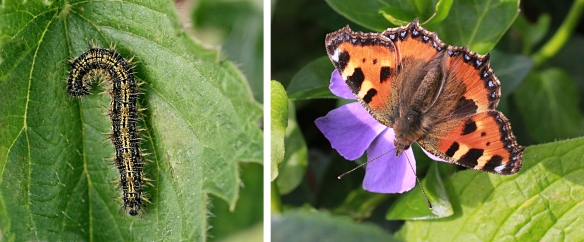Last year I wrote about Parent bugs, marvelling at the fact the mother sits with her nymphs until adulthood. This year it seems this has all changed. I have been watching 11 families of nymphs in Warwick Gardens and none of them have a mother in attendance, even early instar nymphs. I have found them laying eggs and soon after the female has gone. I would have expected a couple of females to fall by the wayside, but all of them? This has got me wondering about what is happening to them. Maybe its an early brood thing – the adults overwinter and breed in the spring so maybe they have just died off before raising their nymphs? Has it got something to do with the warm winter – did they breed too early? Or are the adults being predated – there are certainly a lot of shield bug predating wasps in the park, especially on the southside, and a juicy adult bug would be perfect for the larder. But surely not all the adults would have been taken, especially as the abandonment is happening on trees on both sides of the park?
I have even trudged around the streets of Peckham looking through every silver birch tree I come across and have found plenty of nymphs being brooded by their mothers. So it seems the abandonment is only happening in Warwick Gardens. Have our females formed a union and gone on strike after voting to rescind their parental duties? The nymphs certainly seem to be happy going it alone and not rebelling like teenagers and running amok hosting Facebook parties. They prefer to hang out as a gang on a leaf; so well-behaved that maybe the mothers are feeling unnecessary and trying out a new form of liberal parenting. If this phenomenon continues will our Parent bug have to be renamed the Absent Parent bug?
On a serious note I would be interested if anyone else has noticed Parent bug nymphs without the adult present. Many of our nymphs have reached adulthood and starting their own families so I will be watching to see if this pattern continues.










